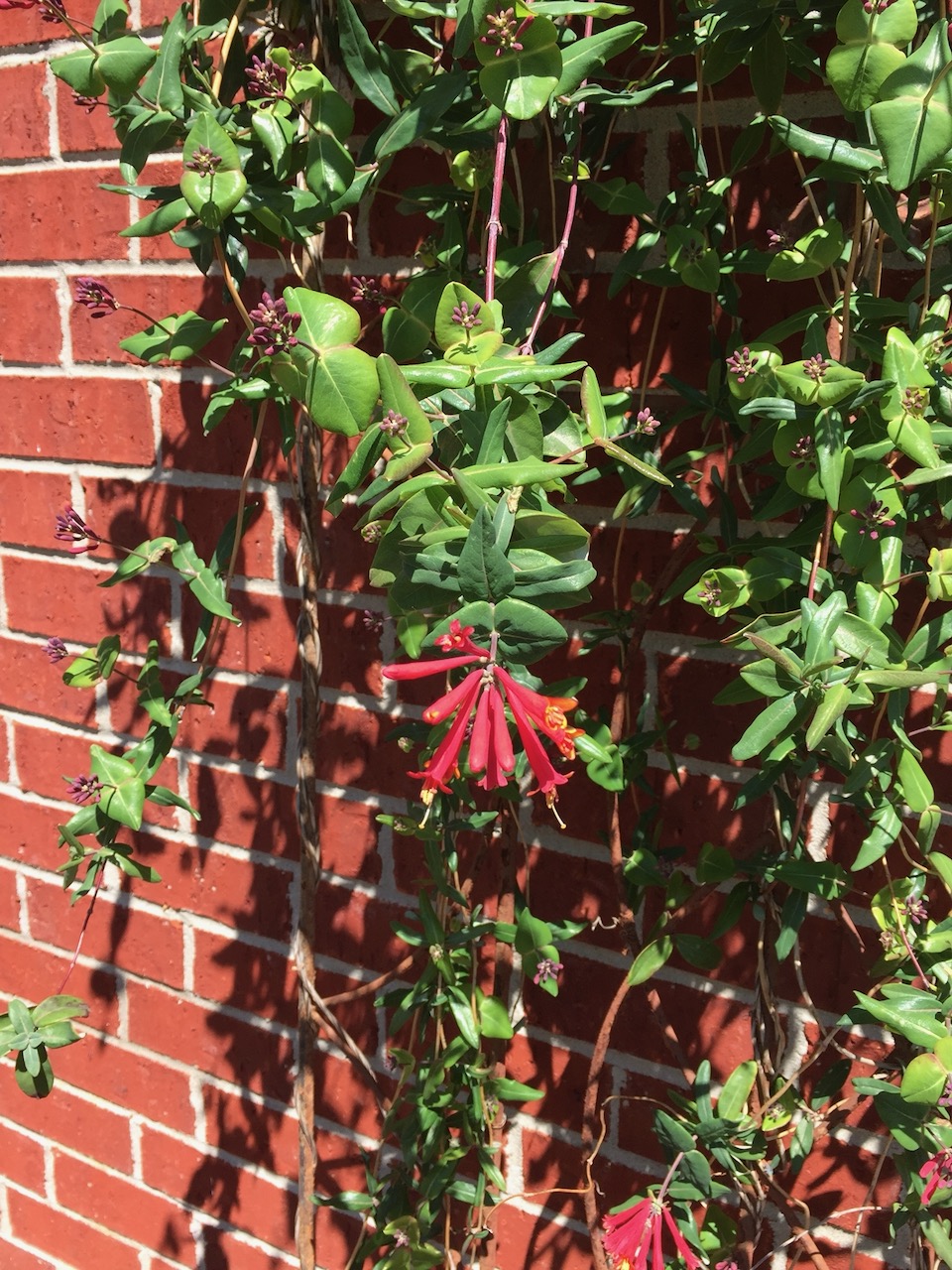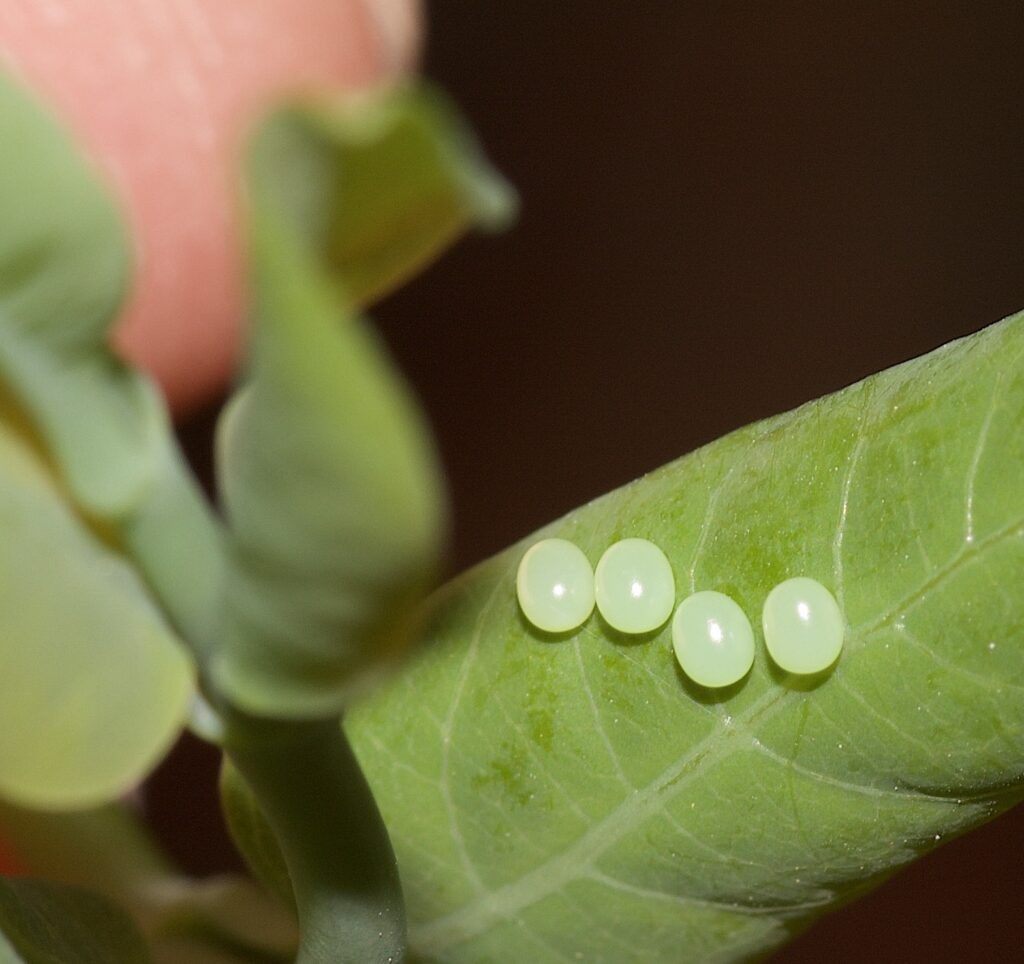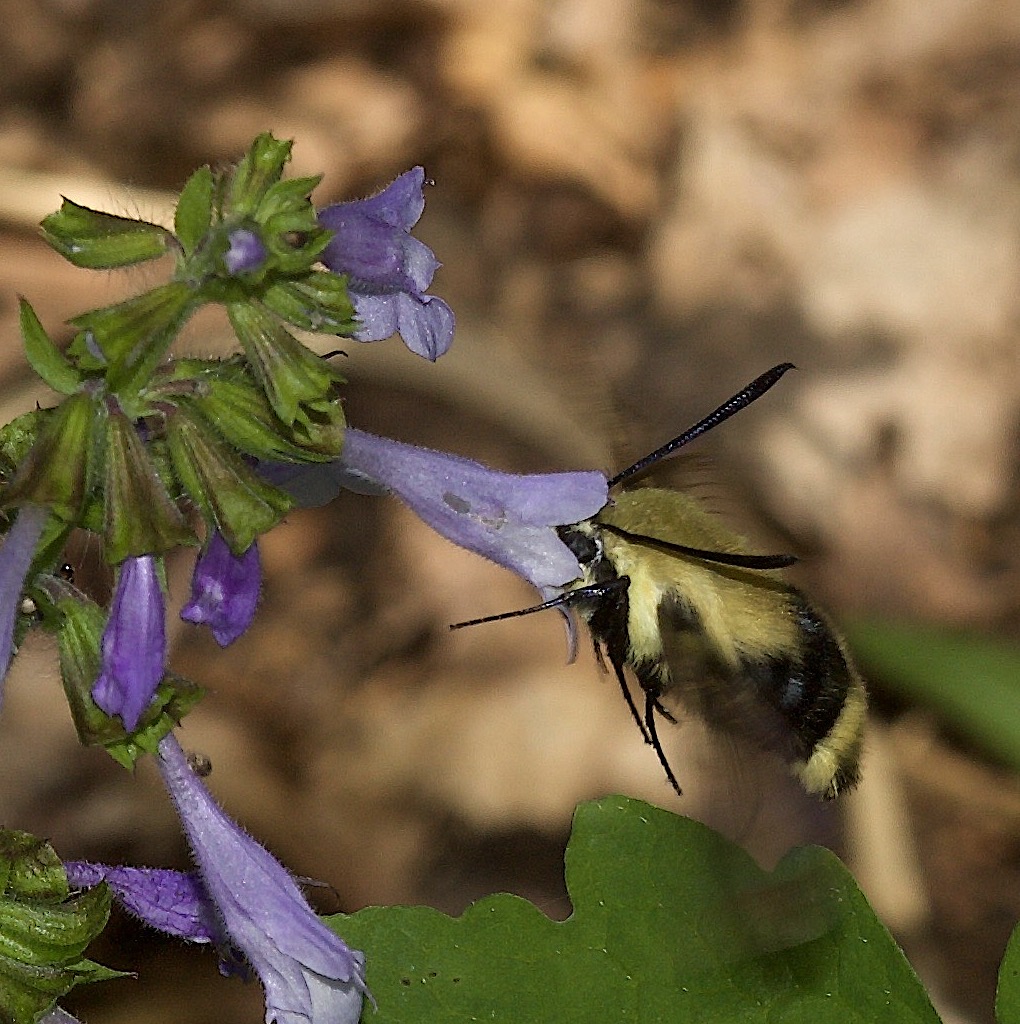
My husband and I planted this native trumpet honeysuckle (Lonicera sempervirens) specifically for the ruby-throated humming birds which pollinate and nectar upon it during warm months in Middle Tennessee.
My husband and I were eating dinner about 6:00 p.m. on April 18, when I noticed a small yellow and black insect flying around our native trumpet honeysuckle vine outside the dining room window.
Another carpenter bee, I thought. Carpenter bees were frequent visitors in that warm south-facing pocket area of our landscape. However, this insect was flying differently. Instead of boldly staring into our dining room window from the outside, this insect was stopping and bending her abdomen toward the tender new growth on the tips of the honeysuckle leaves. A snowberry clearwing moth!

I stopped mid-fork in hand and went outside to inspect after the female moth had flown away. There were single eggs and groups of 2-4 eggs in several locations on the plant.

After a busy round of egg-laying, this female snowberry clearwing moth stopped at lyre-leaf sage (Salvia lyrata) for a smoothie.
I had been expecting and hoping for this moth to visit our yard for several years. I don’t know why this was the big year, but I hypothesize that the lyre-leafed sage nearby the trumpet honeysuckle had something to do with it. After buying a single, rather tired-looking leftover lyre-leaf sage at a native plant sale several years ago, I planted it without much enthusiasm. It took a few seasons to get a good start, but now there’s a good patch of it in my native woodland garden. Also, I had photos of snowberry clearwings on lyre-leaf sage in the wild, so perhaps there’s an association between the sage, the honeysuckle and the moth.
So why was this more than a snowberry clearwing for me? Because it illustrates to me that planting native plants works to bring in wildlife. That my garden matters. That the time I spend out there—beyond nourishing my soul—matters.